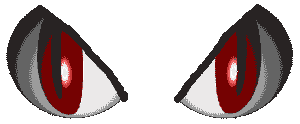
![]()

Mosquito Vectors and Identification
Department of the Navy
Bureau of Medicine and Surgery
Peer Review Status: Internally Peer Reviewed
![]()
Introduction. Human malaria is transmitted only by mosquitoes belonging to the genus Anopheles. Currently 422 species of Anopheles mosquitoes have been identified throughout the world, 70 of which transmit malaria. Of the 70 species that transmit malaria, only 40 are of major significance.
Anopheles mosquitoes are most frequently found in tropical regions, but are also found in temperate climates and in the Arctic during summer (see Appendix Table 2.1). As a rule, they are not found at elevations above 2000-2500 meters (6500-8200 ft).
Mosquito Life Cycle. Development time from egg to adult depends on species and temperature, ranging from 7 days at an average temperature of 31OC, to 20 days at an average temperature of 20OC. Life span is species specific, and is affected by temperature, humidity, and presence of natural enemies. When the temperature is over 35OC or the humidity is less than 50%, longevity is greatly reduced. Average life span of a female mosquito under favorable conditions is 10-14 days, with some able to live as long as 3-4 weeks.
Eggs. Females lay their first batch of eggs 3-6 days after they emerge from the pupal stage. Anopheline eggs are laid singly on the type of water preferred by the particular species. They are blackish, 0.5 mm long, and have tiny air-filled floats that let them drift on the water surface. Eggs hatch 2-3 days after being laid.
Larvae. Anopheles mosquito larvae have unique characteristics. They lack the prominent air tube or siphon found in other mosquito species larvae. They float horizontally on the surface of the water, and turn their heads 180O to feed. They move in sudden jerks, and sink below the surface if disturbed. After molting three times, they develop into pupae.
Appendix Figure 2-1. Differences between Anopheles, Aedes, and Culex mosquitoes at various stages of development.
|
Anophelines |
Culicines |
||
|
Anopheles |
Aedes |
Culex |
|
|
Eggs |
with floats, laid singly on water |
no floats, laid singly on dry/ damp surface |
no floats, laid in rafts on water |
|
Larva |
no air tube
rest parallel to water surface, head rotated 180o when feeding |
one tuft on short stout air tube
rest at angle to surface, head not rotated |
several tufts on slender air tube
rest at angle to surface, head not rotated |
|
Adult |
resting position |
resting position |
resting position |
Pupae. Mosquito pupae are comma-shaped. There are two separate body regions: the cephalothorax (the head and thorax combined), and the abdomen (tail section). They do not feed, but come to the water surface to breathe through short paired respiratory trumpets. The pupal stage lasts 2-4 days, after which an adult mosquito emerges.
Adults. In order for eggs to develop, female mosquitoes require at least one, sometimes two blood meals. Male mosquitoes do not take a blood meal. Adult mosquitoes typically fly and bite within a two-three kilometer radius of breeding areas but strong winds have carried them as far as 30km. Peak biting time is between 1900-2100 hours for some species while other species such as A. gambiae are late feeders, biting between 2400-0300 hours. Control methods should be targeted to coincide with peak biting times when possible. The resting posture of adult mosquitoes differs by species (see Appendix Figure 2-1).
Appendix Table 1. Anopheles species of importance in transmission of human malaria.
|
Region |
Description |
Major Vectors |
|
North America |
From Great Lakes to southern Mexico |
A. freeborni |
|
Central America |
Southern Mexico, Caribbean islands, fringe of South American coast |
A. albimanus |
|
South America |
South American continent |
A. pseudopunctipennis |
|
North Eurasia |
Europe and west Asia, Arctic south excluding Mediterranean coast |
A. atroparvus |
|
Mediterranean |
South coast of Europe, North coast of Africa |
A. atroparvus |
|
Africa-Arabia |
Saharan Africa, North Arabian peninsula |
A. pharoensis |
|
Sub-Saharan Africa |
South Arabian peninsula, Ethiopia, Somalia, tropical Africa, Madagascar |
A. funestus |
|
Indochina |
Indochinese peninsula |
A. dirus |
|
Malaysia |
Indonesia, Malaysian peninsula, Philippines, Timor |
A. campestris |
|
China |
Korea, Taiwan, Japan, and the Coast of mainland China |
A. anthropophagus |
|
Australia-Pacific |
Northern Australia, Papua New Guinea, islands west of 1750 east latitude |
A. farauti type 1 |
Next Page | Previous Page | Contents
Virtual Naval Hospital Home | Help | Search | Outline | Disclaimer | Comments
![]()
Webmaster : Mr. Kulachat Sae-Jang
4436692 MTMT/D
Medical Technology, Mahidol University
E-mail address : oadworld@yahoo.com
